Was ist eine Bess für die Energiespeicherung?
Wenn Sie Solarenergie- oder Backup -Energielösungen erkunden, Sie sind zweifellos auf das Akronym "Bess" gestoßen." Was bedeutet es tatsächlich in der Welt der Batteriespeicherung?? Ist es nur ein technischer Name für eine Batterie?, oder ist es etwas mehr?? Bess zu verstehen ist der Schlüssel zum Verständnis der Moderne, intelligentes Energiemanagement.
In der Batteriespeicherung, Bess steht für Battery Energy Storage System. Das wichtigste Wort ist das System." Ein Bess ist nicht nur die physikalischen Batteriebatterien; Es ist komplett, Integrierte Lösung, die die Batterien enthält, ein entscheidendes Batteriemanagementsystem (BMS), ein Leistungsumwandlungssystem (PCs), Welches ist der Wechselrichter, Plus die Steuerungssoftware- und Sicherheitskomponenten, die für die Sicher und effiziente Stromversorgung erforderlich sind.
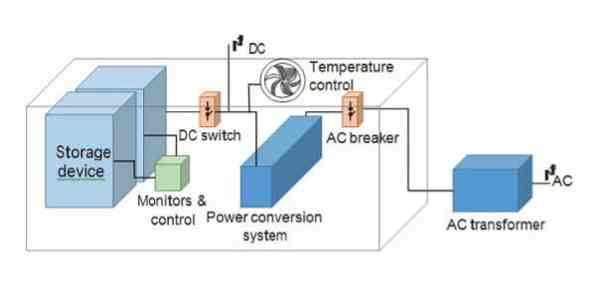
Bei Gycx Solar, Wir sind spezialisiert auf das Entwerfen und Installieren dieser vollständigen Bess -Lösungen. Wir glauben daran, unsere Kunden mit Wissen zu befähigen, damit sie sehen können, warum ein vollständig integriertes System nur einer Sammlung von Teilen überlegen ist. Erkunden wir einige heiße Themen rund um die Batteriesenergiespeicher System.
Wie lange kann Bess Energie halten?
Sie haben saubere Energie von Ihren Sonnenkollektoren in einem Bess gespeichert. Was passiert, wenn Sie es für ein paar Tage nicht verwenden, eine Woche, oder sogar einen Monat? Wird die Energie einfach "lecken" raus und verschwinden?
Eine moderne Lithium-Ionen-Bess ist unglaublich effektiv, um seine Ladung zu halten. Es verliert im Laufe der Zeit nur einen winzigen Bruchteil seiner Energie, ein Prozess, der als Selbstentladung bezeichnet wird. Eine hochwertige LFP (Lithium -Eisenphosphat) BESS, was wir empfehlen, wird normalerweise nur verlieren 1-3% seiner Gebühr pro Monat. Dies bedeutet.
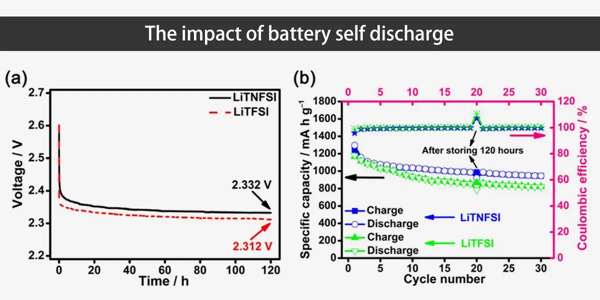
Tauchen tiefer: Die Wissenschaft der Aufbewahrung der Gebühr
Folgendes müssen Sie über die Fähigkeit einer Bess wissen, Energie zu behalten:
- Selbstentladung: Das ist langsam, Natürlicher chemischer Prozess in jeder Batterie, die dazu führt, dass er allmählich die Ladung verliert. Die Rate wird durch die Chemie der Batterie bestimmt.
- Lithiums Vorteil: Die in der modernen Bess verwendeten Lithium-Ionen-Chemie, vor allem LFP, sind sehr stabil und haben eine deutlich geringere Selbstentladungsrate im Vergleich zu älteren Technologien wie Blei-Säure-Batterien, das kann verlieren 5-20% ihrer Gebühr pro Monat.
- Auswirkungen der Temperatur: Wärme kann die Selbstentladungsrate leicht erhöhen. Speichern oder Installieren einer Bess in einem Cool, Die klimatisierte Umgebung hilft ihm, seine Ladung noch effektiver zu halten.
- Standby -Verbrauch: Es ist wichtig, Selbstentladung vom Standby-Leistungsabzug des Systems zu unterscheiden. Wenn die Bess "auf ist" und bereit, seine interne Elektronik (BMS, Wechselrichter) verbrauchen eine sehr kleine Menge Strom. Jedoch, Wenn das System für eine langfristige Speicherung ordnungsgemäß geschlossen wird, Nur die minimale Selbstentladung der Batteriezellen selbst tritt auf.
Für alle praktischen Zwecke, Sie können zuversichtlich sein, dass die Energie, die Ihre Bess -Geschäfte für Sie sind, für Sie da sind, wenn Sie sie benötigen, Ob heute Abend oder nächsten Monat.
Kann Bess recycelt werden??
Als wir die Batterie -Technologie annehmen, Eine kritische und verantwortungsbewusste Frage ist: Was passiert am Ende seines Lebens?? Kann ein groß, Komplexer Bess werden recycelt, um wertvolle Materialien wiederherzustellen und die Umweltauswirkungen zu minimieren?
Ja, Bess kann und sollte recycelt werden. Das Recycling von Lithium-Ionen-Batterien ist eine schnell wachsende und innovative Industrie. Während der Prozess komplexer ist als bei herkömmlichen Blei-Säure-Batterien, Spezielle Einrichtungen können Bess -Module sicher abbauen und fortschrittliche Prozesse verwenden, um wertvolle Materialien wie Lithium wiederherzustellen, Kupfer, Aluminium, Stahl, und andere Metalle. Außerdem, Auswahl einer Bess mit LFP -Chemie Reduziert von Anfang an erheblich Umweltprobleme, Da enthält es kein Kobalt oder Nickel.
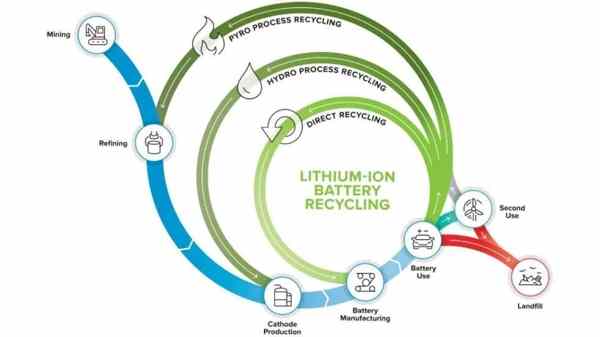
Tauchen tiefer: Das wachsende Bess -Recycling -Ökosystem
Hier ist ein Blick auf den Zustand des Bess -Recyclings:
- Der Prozess: Das Recycling umfasst typischerweise die Batteriemodule in einer kontrollierten Umgebung und dann die Verwendung von Hydrometallurgical (mit Flüssigkeiten ausgelaugt) oder pyrometallurgisch (Hochwasserschmelz) Prozesse, um die Rohstoffe zu trennen und wiederherzustellen.
- Die Herausforderungen: Die Hauptherausforderungen waren die Komplexität, die verschiedenen Materialien in einer Batteriezelle zu trennen und den Prozess wirtschaftlich tragfähig zu machen.
- Schneller Fortschritt: Angetrieben von dem massiven Wachstum von EVs und Energiespeicher, Wesentliche Investitionen strömen in den Bau großer Maßstäbe, effiziente Recyclinganlagen, Besonders in den USA, Europa, und Asien. Unternehmen wie Redwood Materials und Li-Cycle sind führend.
- Der LFP -Vorteil: LFP (Lithium -Eisenphosphat) Batterien sind von Anfang an umweltfreundlicher. Sie enthalten keinen Kobalt, Ein Mineral mit erheblichen ethischen und Umweltproblemen im Zusammenhang mit seinem Bergbau. Dies macht LFP zu einer nachhaltigeren Wahl und vereinfacht einige Aspekte des Recycling -Streams.
- Unser Engagement: Bei GYCX Solar, Wir verpflichten uns der Nachhaltigkeit. Wir priorisieren LFP1. Technologie für ihre Umweltvorteile und arbeitet mit zertifizierten Recyclingdiensten zusammen, um sicherzustellen, Hilfe bei der Schließung der Schleife einer kreisförmigen Batteriewirtschaft.
Wie viel kostet ein Bess -Batterie -Energiespeicherspeicher??
Wenn Sie eine Bess für Ihr Zuhause oder Ihr Geschäft in Betracht ziehen, Das Verständnis der Investition ist ein entscheidender erster Schritt. Was sind die typischen Kosten?, und welche Faktoren den endgültigen Preis beeinflussen?
Die gesamten installierten Kosten einer Bess variieren stark je nach Größe und Fähigkeiten. In den USA, Ein Wohnsystem kann von ungefähr reichen $10,000 für eine kleinere, Einstiegssystem zu $30,000 oder mehr für eine größere, Ganzhaus-Backup-Lösung. Die wichtigsten Kostenfahrer sind die Batterien Energiekapazität (in kWh) und es ist Leistungsbewertung (in kW). Pro Einheit Basis, Die Kosten sind oft zwischen $800 Und $1,500 pro kWh Für ein vollständig installiertes LFP -System in Wohngebieten.
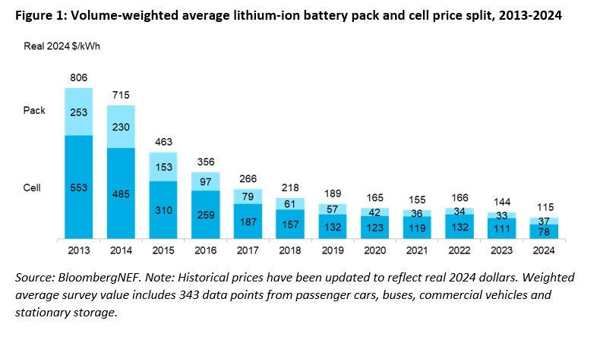
Tauchen tiefer: Die Bess -Investition abbauen
Der endgültige Preis eines Bess ist eine Summe seiner Teile und die Arbeit, um sie zu installieren:
- Batteriekapazität (kWh): Dies ist der größte Kostenfaktor. Mehr Speicherkapazität bedeutet mehr Batteriemodule.
- Leistungsbewertung (kW): Das Leistungsumwandlungssystem (PCs), oder Wechselrichter, bestimmt, wie viel Strom die Bess sofort liefern kann. Ein höheres KW -Rating, um anspruchsvollere Geräte zu verzeichnen, kostet mehr.
- Marke und Qualität: Premium -Marken mit nachgewiesener Zuverlässigkeit, Erweiterte Software, und bessere Garantien haben höhere Kosten, bieten aber oft einen besseren langfristigen Wert.
- Installationskomplexität: Jede Installation ist einzigartig und beinhaltet elektrische Arbeiten, erlauben, und Inbetriebnahme durch Profi, Zertifizierte Installateure.
- Der Bund ITC: Ein großer Faktor in den USA. ist das Steuergutschrift für Investitionen (ITC). Dadurch können Sie abziehen 30% der Gesamtkosten Ihrer Bess aus Ihren Bundessteuern, Solange es von einem Sonnensystem angeklagt wird. Dank der Inflationsreduzierung des Gesetzes von 2022, Das 30% Gutschrift ist jetzt auch verfügbar für Standalone -Batteriespeicher (nicht durch Sonnenaufgabe angeklagt), Bess erschwinglicher als je zuvor machen.
GYCX Solar Story: "Wir bieten immer ein detailliertes Angebot, damit unsere Kunden genau sehen, wofür sie bezahlen. Wir führen sie auch durch den Prozess der Behauptung wertvoller Anreize wie dem Federal ITC, Dies macht einen großen Unterschied in der Gesamtinvestition."
Was ist der Unterschied zwischen einer Brennstoffzelle und einer Bess?
Möglicherweise haben Sie von Wasserstoffbrennstoffzellen als einer weiteren aufkommenden Energietechnologie gehört. Wie vergleichen sie ein Batterie -Energiespeichersystem? (BESS)? Sind sie austauschbar??
Der grundlegende Unterschied ist dies: A Bess ist eine Energie Lagerung Gerät, während a Brennstoffzelle ist eine Energie Generation Gerät. Ein Bess speichert Strom, der an anderer Stelle erzeugt wurde (Wie aus Sonnenkollektoren) und veröffentlicht es später. Eine Brennstoffzelle erzeugt Strom bei Bedarf durch eine chemische Reaktion, Typischerweise zwischen gespeichertem Wasserstoffbrennstoff und Sauerstoff aus der Luft. Ein Bess ist wie eine wiederaufladbare Batterie; Eine Brennstoffzelle ist wie ein chemischer Generator.
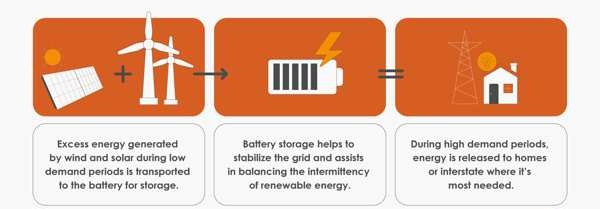
Tauchen tiefer: Speicher vs. Generation
Vergleichen wir sie mit wichtigen Metriken:
| Besonderheit | Batterie-Energiespeichersystem (BESS) | Kraftstoffzellensystem |
|---|---|---|
| Funktion | Geschäfte und Elektrizität entlädt. | Erzeugt Strom aus einem Kraftstoff. |
| Kraftstoffquelle | Strom (Aus Sonnenen, Netz, usw.). | Wasserstoffgas oder andere Brennstoffe (Methanol, usw.). |
| Effizienz | Hohe Hin- und Rückfahrt-Effizienz (85-95%+). Sehr wenig Energie geht verloren. | Geringere Effizienz (40-60%). Energie geht bei der Herstellung von Wasserstoff und in der Brennstoffzellenreaktion verloren. |
| Laufzeit | Begrenzt durch seine KWH -Speicherkapazität. | Nur durch die Menge an Kraftstoff eingeschränkt, die Sie speichern können. |
| Ansprechzeit | Sofortig. | Sehr schnell, aber nicht sofort (ein paar Sekunden, um sich zu erhöhen). |
| Emissionen | Keine am Gebrauchspunkt. | Nur Wasser und Wärme (für Wasserstoffbrennstoffzellen). |
| Hauptverwendung | Solar-Selbstkonsum, Grid Services, Wohn-/Gewerbe -Backup. | Langzeit-Sicherung, Transport (FCEV), Spezifische industrielle Prozesse. |
Das Urteil für die Solarspeicherung: Für einen Hausbesitzer oder Geschäft mit Sonnenkollektoren, Ein Bess ist eine weitaus effizientere und praktischere Lösung. Es speichert direkt den DC -Strom, der von Ihren Panels mit sehr hoher Effizienz erzeugt wird. Bei einem Brennstoffzellensystem müssen Sie Ihren Sonnenstrom verwenden, um zuerst Wasserstoffbrennstoff zu erzeugen (ein ineffizienter Prozess, der als Elektrolyse bezeichnet wird), Lagern Sie den Wasserstoff, und wandeln Sie es dann zurück in den Strom in der Brennstoffzelle um, was zu viel größeren Energieverlusten führt.
Während Brennstoffzellen eine faszinierende Technologie für spezifische Langzeit- oder Hochleistungsanwendungen sind, Ein Bess ist der klare Gewinner für die effiziente Erfassung und Verwendung von Solarenergie zu Hause. Bei GYCX Solar, Wir konzentrieren uns darauf, die effizientesten und kostengünstigsten Bess-Lösungen zu bieten, die heute verfügbar sind.
Ein Bess ist mehr als nur eine Batterie - es ist eine vollständige, Intelligentes System, das Sie in die Kontrolle Ihrer Energie versetzt. Durch das Verständnis seiner Komponenten, Kosten, bemerkenswerte Fähigkeit, eine Gebühr zu halten, und wie es im Vergleich zu anderen Technologien ist, Sie können sehen, warum es ein Eckpfeiler der modernen Landschaft für saubere Energie ist.
Wenn Sie bereit sind zu untersuchen, wie a Batteriesenergiespeicher Lösung kann Einsparungen bringen, Sicherheit, und Nachhaltigkeit zu Ihrem Zuhause oder Geschäft, Das Expertenteam von GYCX Solar ist hier, um Sie zu führen. Kontaktieren Sie uns noch heute für eine professionelle Beratung!
Wenn Sie das Konzept von LFP verstehen. Auf diese Weise können Sie das Produkt auswählen, das Ihren Anforderungen von unserem Unternehmen am besten entspricht. ↩
